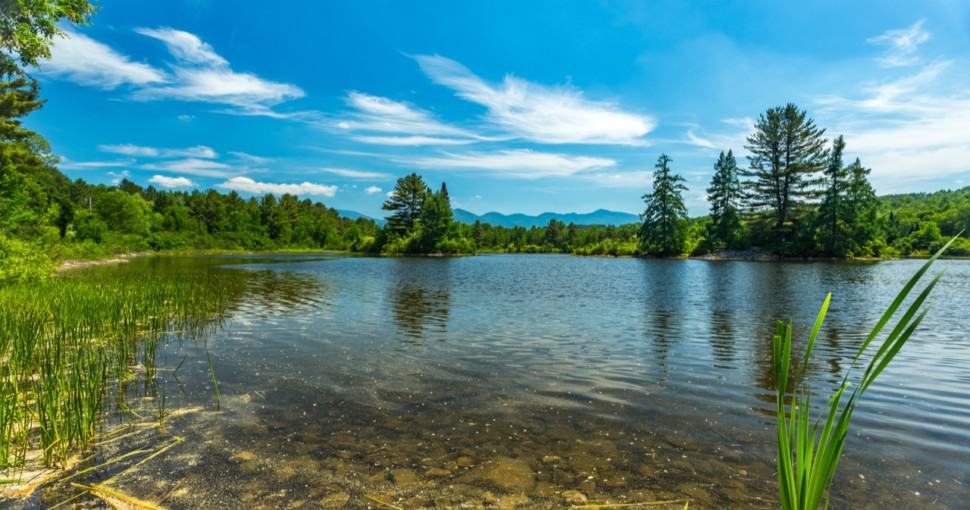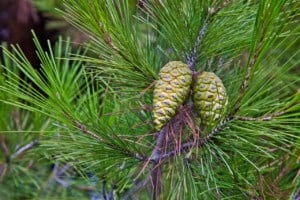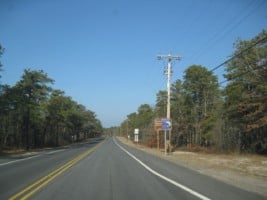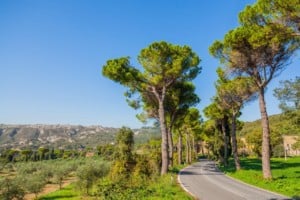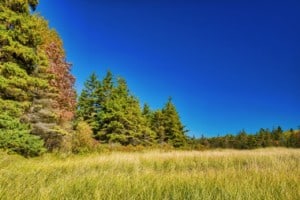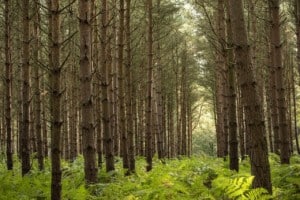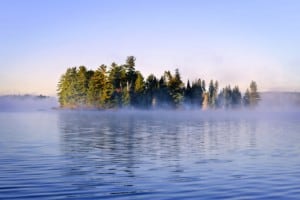Do you wish to grow Pine trees in your home in New Hampshire? Well, there is no shortage of Pine trees growing in the US. They are the most widely spread genus of native species growing in North America. Read on to discover the types of Pine trees you can grow in New Hampshire!
Contents
Belonging to the family of conifers called Pinaceae that includes 11 genera of conifers, including Firs, Pines, Cedars, and Spruces, Pine trees are popularly grown North American natives. There are about 250 species of Pine trees throughout the world, making them one of the most abundant and diverse species in the conifer family.
Pine Trees are popularly used by timber and paper manufacturers. Many of these trees can withstand burning, as their thick bark provides them with a layer of protection against fires. Even though Pines thrive in full sun and need about six hours of daily sunlight, they can adapt to colder environments and nutrient-poor soils.
Moreover, Pine trees have needle-like leaves that form a dense mat on forest floors and prevent any other plant from growing underneath them. Pines develop thick canopies of evergreen needles. These trees grow as shrubs or incredibly tall, full-sized trees with wide branches and iconic hardened cones. These trees are naturally found in the Northern Hemisphere in South East Asia, Russia, North America, and Europe.
Here are all the most common types of Pine Trees you can find in New Hampshire.
1. Eastern White Pine (Pinus Strobus L.)
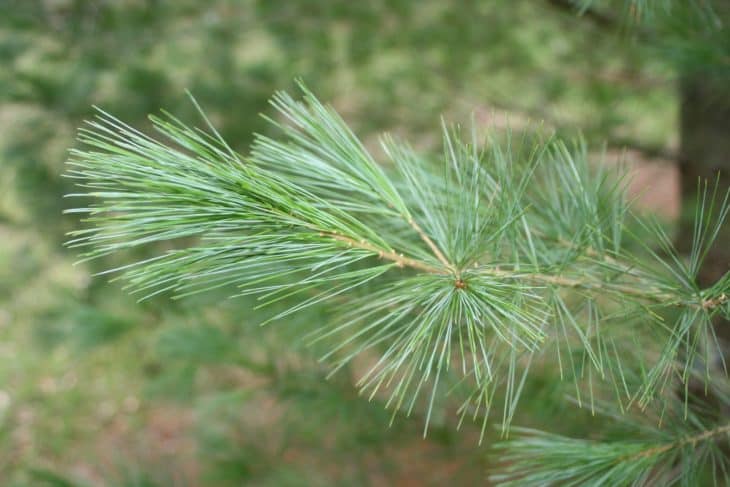
Eastern White Pine is an evergreen tree that might grow up to a height of 50 to 80 feet and a width of 20 to 40 feet. Native to the Northeastern United States and Canada, Eastern White Pine grows naturally in sandy, dry, high, and rocky ridges.
It thrives in full sun and moist, sandy, fertile, free-draining loams. This attractive ornamental is valued for its lightweight wood.
It features clusters of 3-5 inches long, slender, deciduous, bluish-green, soft, pliable needles and a green bark with light patches. When mature, the bark turns reddish-brown and develops round, finely-scaly, dark furrows.
In spring, this tree grows clusters of yellow, cylindrical, male blooms and light green female flowers that give way to resinous, brown-hued, showy, curved cones.
2. Pitch Pine (Pinus Rigida Mill.)
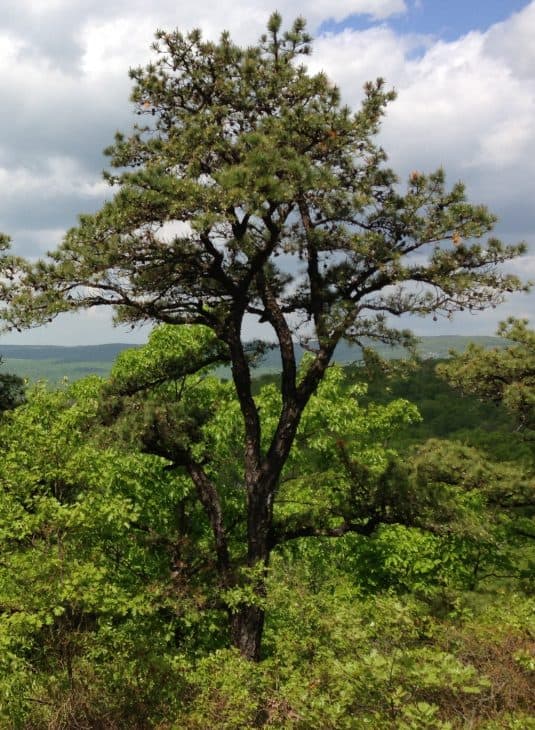
Pitch Pine is a 40 feet to 70 feet tall tree with an irregular to round, broad crown with horizontal and drooping gnarled branches. It features dark, reddish-brown bark that turns blackish-gray with age.
Pitch Pine needles are greenish-yellow, 3 inches long, and stiff. They grow in clusters of three and eventually turn dark green. This tree grows yellowish-brown, egg-shaped, 1-3 inches long cones with pointed, resinous scales.
Pitch Pine grows in shallow sands and gravels in river valleys, swamps, steep slopes, and ridges. It’s a hardy species that is resistant to injury and fire.
3. Red Pine (Pinus Resinosa Aiton)
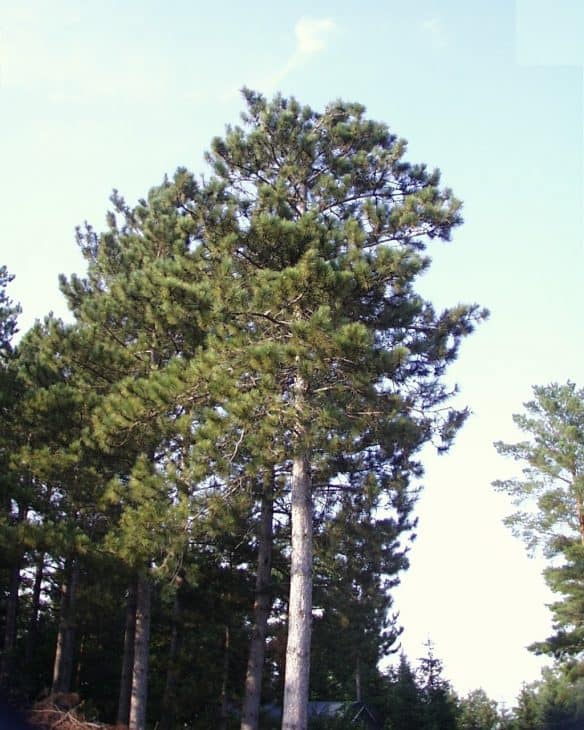
Red Pine is a 75 to 80 feet tall tree that can grow up to 200 feet in optimal soil conditions. This tree features a single trunk, a dense, oval crown, and curved branches with yellowish-brown twigs that turn orange-brown or reddish with age. The bark of the Red Pine is reddish-brown and features a distinctive diamond plate pattern.
Needles of Red Pine Trees are dark green, brittle, inflexible, stiff, sharp-tipped, and slender. This tree grows male and female cones on separate branches. The conical or oblong, reddish-brown female cones are in the upper portion of the crown, while the red-hued, small male cones grow in the lower crown branches.
Red Pine grows naturally in gently sloping or level plains, bordering swamps, and lakes. This shade-intolerant tree thrives in full sun and medium to coarse-textured, well-aerated sandy and loamy soils.

